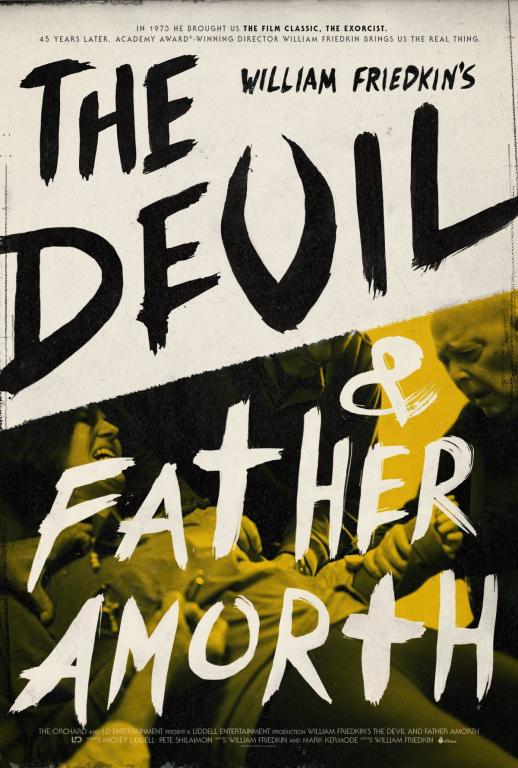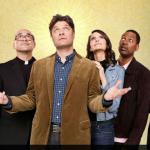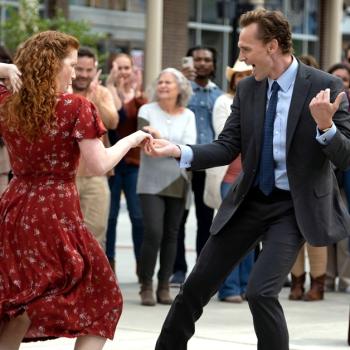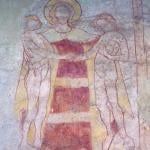
On Saturday night, I’m going to see William Friedkin’s documentary “The Devil and Father Amorth” on the big screen in Los Angeles (it’s out in limited release in LA, New York and other selected cities on Friday, April 20; then on demand and digital on April 24). Until then, I’ve had to settle for an online screener. Not sure if the theatrical viewing will affect my thoughts, but right now, not too sure what those are.
Friedkin is the director of the 1973 movie “The Exorcist,” from a screenplay by Catholic author William Peter Blatty, based on his 1971 novel of the same name. The novel itself was loosely inspired by a 1949 exorcism case in the Midwest.
Now, 45 years later, the 82-year-old Friedkin has revisited the subject matter, with “The Devil and Father Amorth.” According to Friedkin, as related to Catholic News Service, he was in Italy in 2015 to receive the Puccini Prize for directing operas. On an impulse, he emailed a religious-scholar pal about meeting either the pope or Father Gabriele Amorth. The pope was busy, but Father Amorth said yes.
A priest of the Society of St. Paul, or Pauline Fathers (many know the female Paulines, the Daughters of St. Paul, who operate Pauline Books & Media stores and are known as the “media nuns”), Amorth has often been called the “Vatican exorcist.” Actually, he was named exorcist of the Diocese of Rome in 1985 (or 1986, depending on the source), which is not the same thing as the Vatican. Amorth was also known for being quite outspoken about Satan and manifestations of evil.
Before passing away in late 2016 at the age of 91, Amorth met with Friedkin and eventually agreed to allow him to film an exorcism, and that footage forms the core of “The Devil and Father Amorth.” To be honest, the film’s unpolished, cinema verite look reminded me more of “In Search Of” and “Unsolved Mysteries” than “The Exorcist.”

The woman is called Cristina (not her real name; Friedkin called her Rosa in his Vanity Fair article that preceded the film), a single professional whose boyfriend accompanies her for her ninth exorcism. As Father Amorth performs the ritual, she writhes in her chair and strains against the men holding her down.
The most striking feature of the footage is her voice. In the film, it sounds electronically altered, as if two or more voices were blended together in post-production. Oddly, it’s just the sort of voice one would expect to hear from someone in an exorcism movie. This strange quality is not evident in a 2016 Vanity Fair video, featuring audio from the footage over pixelated stills (click here to watch).
Some reviewers state their belief the voice was altered in post-production, without appearing to actually have asked whether that’s the case.
I specifically questioned producer Pete Shilaimon of LD Entertainment about the voice via email, and he wrote:
Her voice was not altered — I saw the director’s cut right after I spent time with Billy [Friedkin] in Georgetown, and we hadn’t even started post. The cut I saw was raw, and her voice was not touched.
Regarding the Vanity Fair audio, he wrote:
When you finish a movie in post, everything is on a higher level, the color is better, the audio is in Dolby, etc.
Friedkin then takes his footage to a variety of medical experts — who are about as peculiar-looking as the elfin Amorth — who don’t attempt to debunk the footage but to give it a medical or psychological explanation.
In short, in their view, possession can be a real psychological phenomenon, whether or not you believe anything supernatural is involved, and the exorcism ritual can work as a treatment in some cases.
The film also explores a second, even stranger encounter with Cristina and her boyfriend in an Italian church, which Friedkin didn’t capture on film.
Not many folks will get the chance to see “The Devil and Father Amorth” in a theater, but distributor The Orchard says the theatrical run will be followed by a “worldwide digital release.”
It’s a short, strange film that may or may not change anyone’s mind about the reality of the devil or exorcism. In general, I accept the possibility of many things, while still remaining skeptical about particular incidents — including the exorcism in the film. At this moment, all I can say is that the footage seems legit.
But, Friedkin — who says he believes in Jesus’ teachings, but not necessarily the Resurrection — seems genuinely shaken by the whole experience. Some in the Church have also questioned the propriety of allowing any exorcism to be filmed.
My viewing companion for the screener was Father Vince Kuna, C.S.C., a priest of the Holy Cross Order and a graduate of USC Film School. Asked for commentary, he wrote:
To me, the most unexpected part of “The Devil and Father Amorth” is Friedkin’s interview with L.A.’s Bishop Robert Barron. Known as one of the Church’s leading media evangelists and a spiritual powerhouse, Barron tells Friedkin that he’s not trained in exorcism, and that he would be too afraid to perform an exorcism ritual himself, fearing that he’s not holy enough for the task.
Frankly, I’d love to hear Bishop Barron expound more on this.
“The Devil and Father Amorth” is just over an hour long and only skims the surface of exorcism as a subject. But it has a jarring quality and is a startling counterpoint to a polished film like “The Exorcist.”
It didn’t scare me, but it did freak me out a bit.
Images: LD Entertainment/The Orchard; Wikimedia Commons
Don’t miss a thing: head over to my other home, as Social Media Manager at Family Theater Productions; and check out FTP’s Faith & Family Media Blog, and our YouTube Channel














